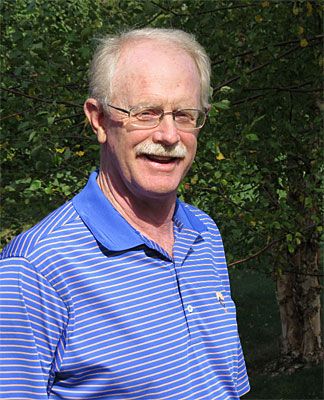- News
- Four holes to watch at Salem Country Club - 2017 US Senior Open
Four holes to watch at Salem Country Club - 2017 US Senior Open

2017 US Senior Open
Four holes to watch at Salem Country Club
by M. James Ward
This week's Senior Open marks a second visit -- both to the State of Massachusetts and the renowned Donald Ross design at Salem Country Club in Peabody. How appropriate the logo for the club features a witch on a broom because competing players will need all the magic on their side in dealing with such a bewitching layout.

Salem has gone through recent architectural enhancements to reinvigorate the original qualities provided for by Ross. Architect Ron Forse was responsible for resurrecting some of the more important features of this classic course. Interestingly, just as with the 2001 Senior Open at Salem the nines have been flipped for the purpose of encouraging smoother gallery flow.
Forse shares his comments on four key holes he sees as playing a pivotal role in determining which player will have the honor of hoisting the Francis D. Ouimet Memorial Trophy as the 2017 US Senior Open champion.
4th hole / 341 yards / Par-4
Known as Salem's signature hole despite being the shortest par-4 at the course. How good is the hole? Ben Crenshaw views the 4th as his favorite at Salem. In the 1984 US Women's Open the 4th showed plenty of teeth in having the highest average over par total. Prior to my involvement all of the greens were simple ovals or circles. The greens were expanded and restored to their original size and shape. This 4th now has a reinstituted pin position on the left rear side beyond a side swale which could not be used previously. Best of all, all four corners of the green have now come back into play.
The 4th commences from an elevated tee with players hitting into a punch bowl area. The approach played over two cross bunkers roughly 290-300 yards from the tee. Most players will lay-up and leave themselves about 100-125 yards to a partially visible green to a target roughly 4,500 square feet. There's also a front left pot bunker -- about 4-5 feet deep -- which must be avoided at all costs.
8th Hole / 422 Yards / Par-4
The 8th commences with a tee shot to a fairway that eventually drops 30-feet in the 260-yard range -- in all likelihood players will look to position their tee shots just short of that fall-off area thereby securing the most advantageous level lie for the approach.
The putting surface sits on a crowned ridge -- Ross used the natural contours of the ground -- providing a strongly domed green falling off in all directions. As with the other greens -- the 8th was restored to original size and shape. Any pin placement near any of the edges is very risky to attack. A six foot deep bunker cut into the upslope at the front right corner of the green. The most demanding pin location is just behind that bunker on a narrow corner that was just restored. Grass cuts, just off the green mowed to fairway height, will accentuate the roll-off of any misplayed iron shot.
15th Hole / 218 Yards / Par-3
Play starts from a tee elevated 40 feet above the green. The 15th is the longest of the par-3's at Salem and will prove most vexing to the players. The general prevailing is from right to left and helping but can change at any time. An ancient stone wall parallels the hole on the right side with out-of-bounds awaiting the poorly executed play.
The putting surface is nearly 7,000 square feet. The green has a large ridge which runs from back-to-front -- a descent three foot high that moves from back to front. This ridge bisects the rear half of the green -- with pin placements that can be placed in either side. That same ridge tapers off in the center of the green. The back left corner is protected by a four-foot deep side bunker. A series of interesting mounds protects the right side of the putting surface. Pars will be dearly sought on this demanding hole.
18th / 464 Yards / Par-4
Finding the undulating fairway surface at the closing hole will be a difficult chore. The fairway remains level on the right side but starting at roughly 180 yards off the tee the left side falls abruptly and can easily feed balls hit in that area to rough on that same side. The strongest of players can attempt to reach the crest of a hill with a tee shot in excess of 290 yards. Those who succeed can then find a level area in front of a pond approximately 350 yards from the tee.
Originally the 18th was in the 430-435 yard range, but in the Fall of '15 a recommendation was accepted to extend the hole to the present yardage so that the usage of drivers would be strongly encouraged. What adds to the quality of the hole is that not only does the terrain and yardage impact what a player opts to do at the tee -- but there is also out-of-bounds that guards the entire right side of the hole.
The approach is complicated by a green that's double tiered - front and back. Set in an amphitheater setting the putting surface is approximately 6,000 square feet. Like other greens which evolved to oval shapes -- the 18th was restored to the square-type shape originally envisioned by Ross. To keep players from kicking off the left slope -- Ross cut a bunker in the left hand corner of the green. Being above the hole presents a testing situation that can clearly impact the nerves and easily lead to a three-putt or more. A worthy finishing hole to crown a worthy champion.
Ron Forse

Forse Design has consulted on over 170 golf courses and designed new layouts throughout the US and Canada. Established in 1989, the firm has offices in Pennsylvania and Florida. He has taught seminars for the Golf Course Superintendents Association of America (GCSAA) and frequently speaks at golf industry conferences.
With a particular focus on the classics, Forse Design has restored and improved Golden Age courses such as Riviera, Wannamoisett, Lancaster and Indian Creek.
Forse's work has garnered two Golf Inc. Renovation of the Year awards: Bedford Springs in 2009 and 2014 for the CC of Buffalo.
This week's US Senior Open venue, Salem Country Club in Peabody, MA, was restored and prepared over the last two decades culminating in recent putting green reclamation. In 2018 the Broadmoor and Newport CC in 2020 will each host the US Senior respectively and where Forse has executed extensive bunker, tee and green restorations.